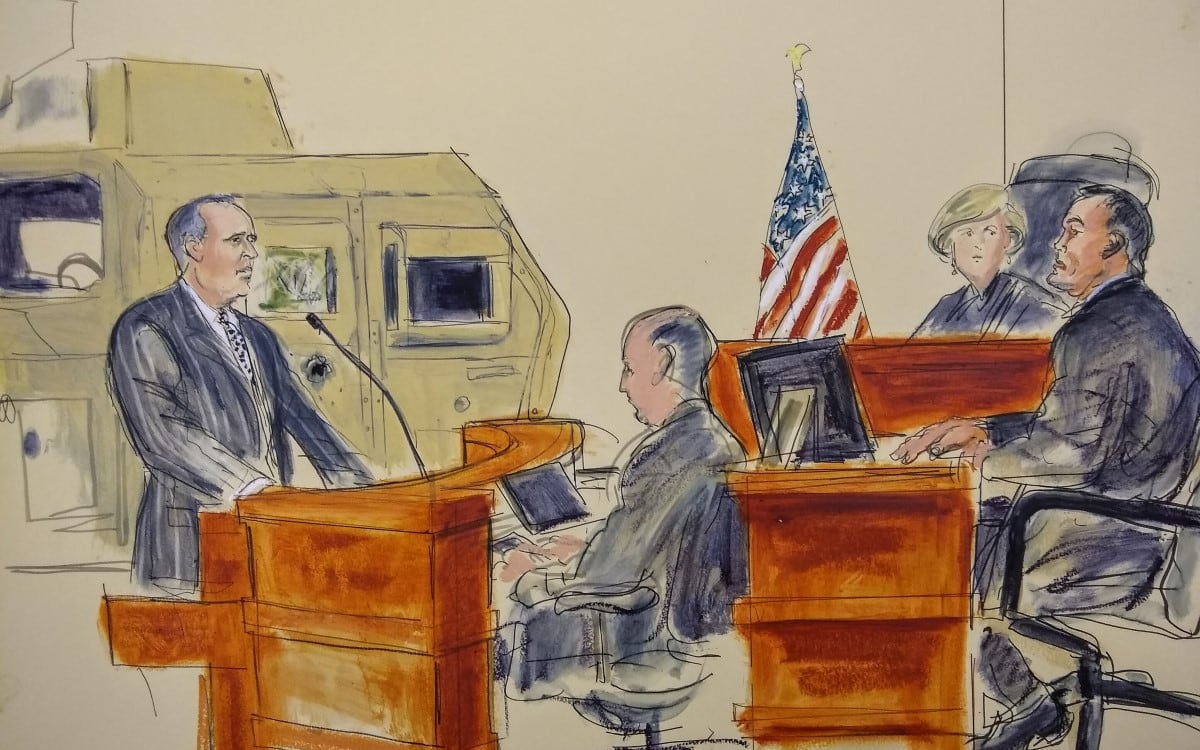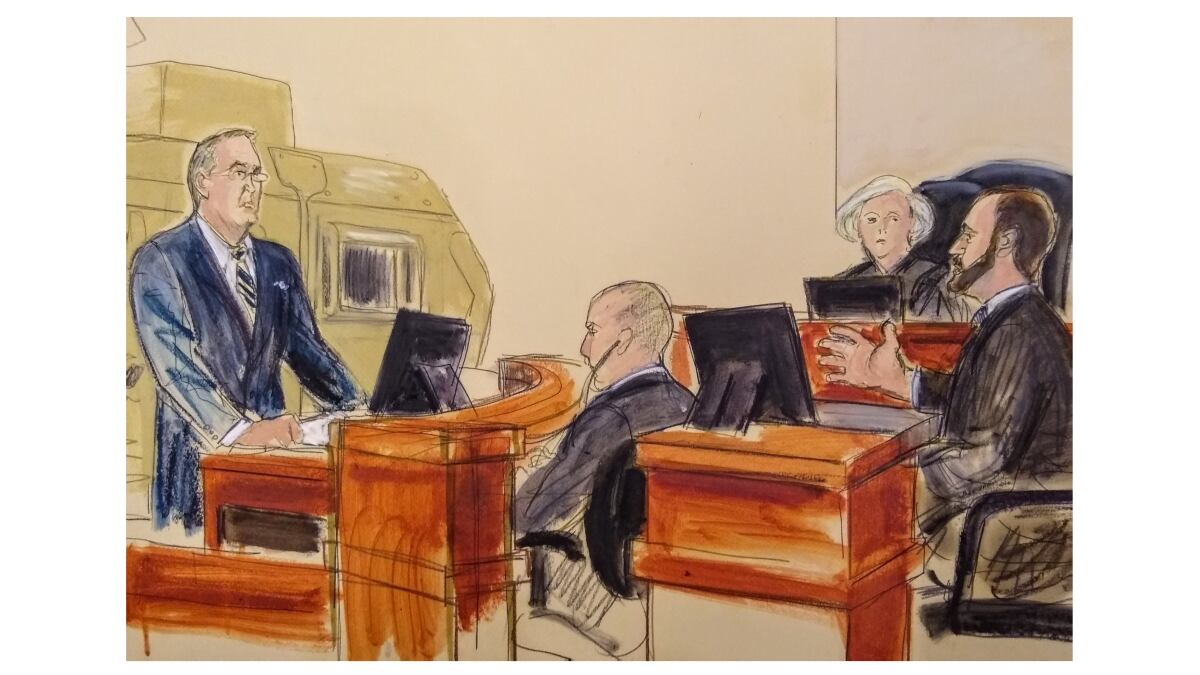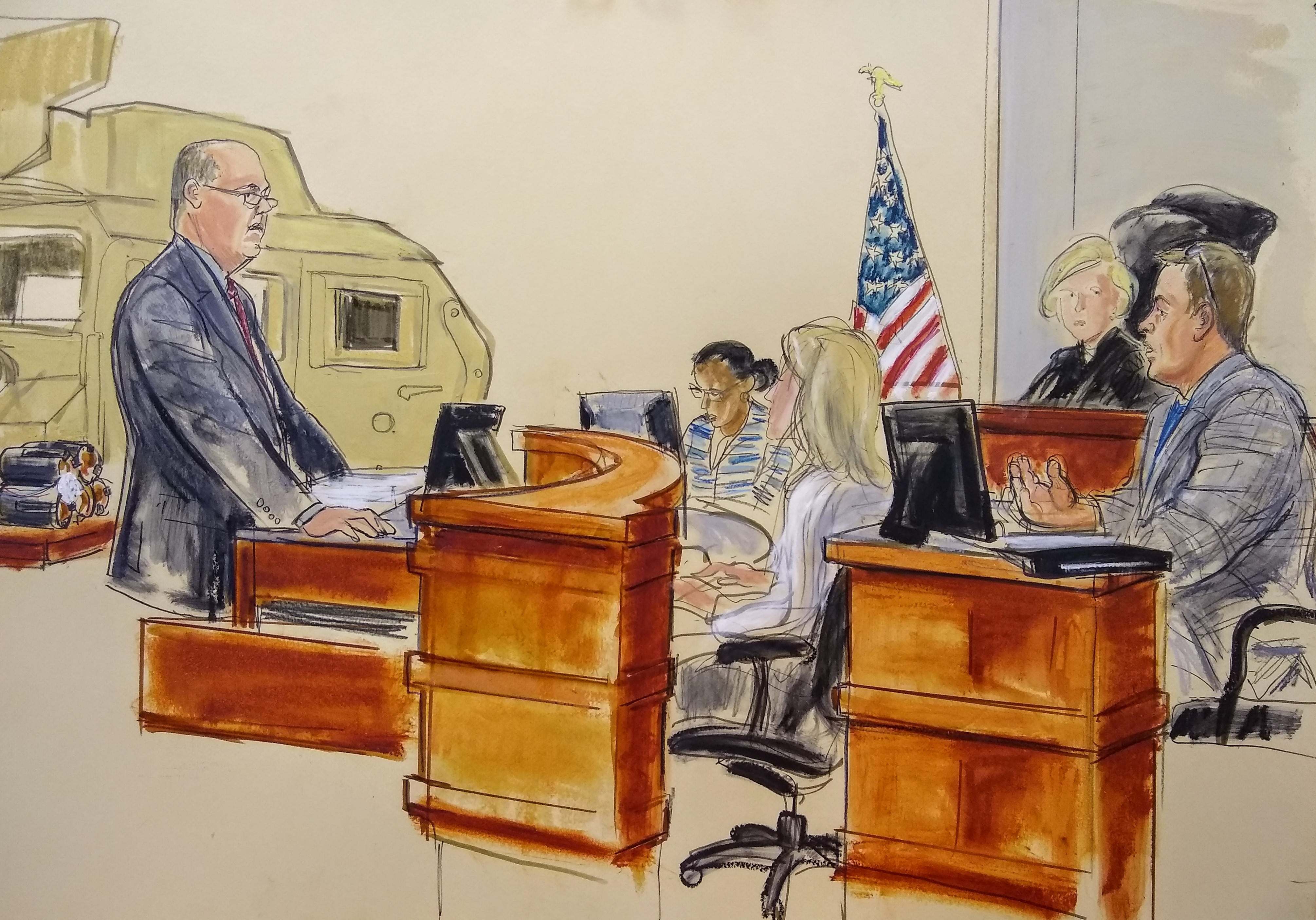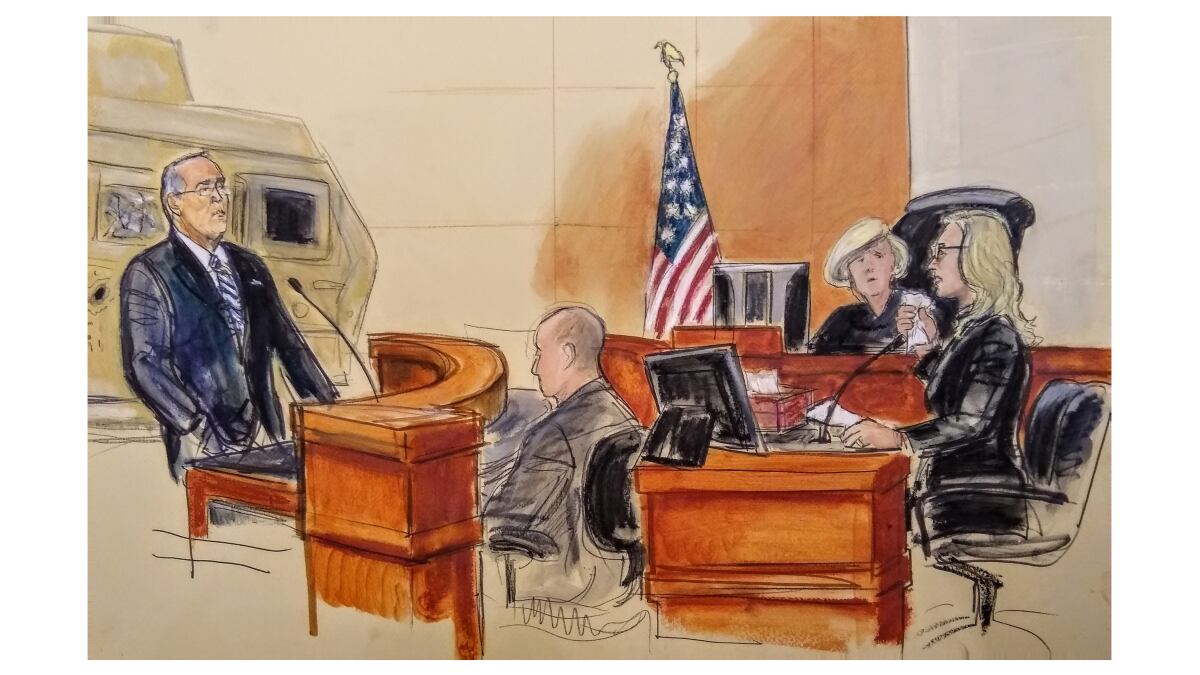In February 2008, Army Staff Sgt. Christopher Hake wrote a letter to his infant son.
The neatly scripted, single-page message told little Gage how special the boy was to this first-time father, how the night he left on this second Iraq deployment was the hardest he’d face, how he’d kept picking up the boy, kissing him, putting him back down and then picking him up again.
“I never wanted to let you go,” Hake wrote.
But the 26-year-old staff sergeant had a mission. He had to go.
As he closed the letter, he made promises to his son.
“I will be with you again. I will teach you to ride your first bike, build your first sand box, watch you play sports and see you have kids also,” Hake wrote.
“I am always with you. Dadda,” he signed off.
Those words were read this week in federal court by Kelli Hake, Christopher’s wife. She is one of more than 200 plaintiffs included in a $10 billion lawsuit against the Islamic Republic of Iran for their arming, training, funding and directing of a host of terrorist groups, to include Hezbollah, in attacks in Iraq against U.S. and coalition forces from 2004 to 2011.
This is one of a number of lawsuits that seeks to tie Iran to the attacks in court, along with separate lawsuits aimed to hold at least six major international banks liable for funding that attorneys say was laundered illegally through the United States and, part of which, was funneled to the terrorist groups.
There is no jury, and Iran sent no attorneys. The proceedings this past week involved plaintiffs’ lawyers laying out their case to a federal judge, who should issue her ruling, likely with a detailed opinion, in the coming weeks or months.
RELATED

If successful, the plaintiffs could be compensated from a fund set up for victims of state-sponsored terrorism. More than $1 billion has been paid out so far, and expert estimate as many as 6,000 U.S. citizens could be eligible for assistance.
On March 23, 2008, weeks after he wrote the letter, Hake volunteered to serve as the truck commander in the lead Bradley Fighting Vehicle as a convoy wrapped up six hours of patrolling with Iraqi police and an Army psychological operations unit.
First Lt. Rusty Mason commanded the trail vehicle. He’d asked Hake to join him on the patrol, knowing him to be one of his best soldiers, a trustworthy NCO who never slacked in his duties, Mason testified.
The soldiers were happy to be heading back. It was Easter in Baghdad, and they were set for a meal of pork chops and mac n’ cheese, Mason recalled.
The Bradley’s gun was covering the rear of the convoy as they moved, all was going well.
“I heard a loud pop through the headset,” Mason said.
He turned the gun forward. The lead vehicle had stopped. On this moonless night, even with night vision and thermals, he was sure what was happening up ahead.
“Alpha 1-2, this is Alpha 1-6,” he said into the radio.
Nothing.
“Alpha 1-2, this is Alpha 1-6,” he repeated.
“And I just heard silence,” he said.

His Bradley rolled the 500 meters forward to see what was happening. Through the gun’s thermal sight, he saw a terrifying image.
“A person running back to our vehicle, and they were completely engulfed in flames,” Mason said.
It was Sgt. Steve McCoy, who’d been in the lead vehicle.
The lead Bradley had been hit by an explosively formed penetrator, which had cut across the low end, striking the fuel tank and causing the Bradley to burst into flames.
Hake, Spc. Jesse Rubio-Hernandez, Pfc. Andrew Habsieger and Pvt. George Delgado all died in the fire.
Soldiers rushed to help McCoy, who survived the fire but would die on June 10, 2008, at Brooke Army Medical Center in San Antonio, Texas, from his wounds.
The five soldiers are part of an estimated 1,000 U.S. troops killed or maimed in EFP attacks orchestrated by Iran from 2004 to 2011.
Throughout the trial, which ended Thursday, U.S. District Judge Colleen Kollar-Kotelly saw evidence that included expert analysis of the forensic characteristics of the attacks and detailed reports connecting Iranian entities that funneled weapons, training and advancements to Shia groups in Iraq to attack U.S. troops.
She also heard wrenching testimony from victims of the attacks, families and troops who suffered directly, including Staff Sgt. Robert Canine.
On May 17, 2009, Canine was in an uparmored Humvee when an EFP blasted through the front passenger floorboard, cutting through both of his lower legs.
One was immediately amputated; the other was later taken off by surgeons at Walter Reed Army Medical Center.
Canine testified in the trial about the pain, surgeries, physical rehab, sleeplessness, trauma and host of other problems he’s faced over the decade since.
RELATED

He spoke with Military Times after his testimony about the lawsuit.
Yes, he said, the lawsuit would help him financially. But he admits at first he was skeptical when contacted three years ago about his eligibility to be a plaintiff in the suit.
Dealing with his injuries daily, he wasn’t sure that recounting those experiences would be worth it, especially if winning a lawsuit was a long shot and getting any compensation might be years or even decades away, which was what has happened in other such terrorism-related cases.
And it would involve separate lawsuits. This one against Iran is unlikely to do more than set the stage for more evidence against financiers of the attacks.
But two things solidified his resolve.
First was the Wikileaks report in which he was able to see detailed references to Iranian involvement in his attack. He and his fellow soldiers were briefed on the EFPs and the Iran links before their deployment. But, seeing it in black and white helped cement the evidence.
Then he learned about the banks.
In 2012, HSBC admitted to its role and agreed to forfeit $1.25 billion; Credit Suisse agreed to forfeit $536 million; Commerzbank AG agreed to pay $1.45 billion; Standard Chartered Bank reached a $340 million settlement; and Barclay’s forfeited $298 million in connection with its violations.
Federal prosecutors had emails in which bank officials instructed Iranian counterparts on how to scrub documents so as to avoid tracing the money flow back to Iran.
“Had the banks stopped the payment, we could have put more of a clamp down on these attacks,” Canine said. “Had the banks stopped, I probably wouldn’t have gotten blown up, and I’d still be in the Army.”
After he was contacted, he reached out to other soldiers who had been injured by EFPs. Some of them joined in as plaintiffs as well.
“I want the banks to pay as much as possible,” Canine said.

On the day that Hake and his fellow soldiers were killed, Kelli Hake, back at Fort Stewart, Georgia, waited for a phone call her husband had promised on Easter Sunday.
At first, she didn’t worry. Maybe he got busy.
She checked the news online before going to bed that night. An article said that the 4,000th U.S. service member had been killed. It just didn’t seem possible that it could be Chris, she thought.
At about 6 a.m., she heard a knock on her door. Two soldiers in dress uniform stood outside her front window. It still didn’t register.
She opened the door.
“Are you Mrs. Christopher Hake?” they asked.
She said yes.
“Then it hit me why they were there,” she said. “I shut the door, because I didn’t want to hear what they had to tell me.”
Todd South has written about crime, courts, government and the military for multiple publications since 2004 and was named a 2014 Pulitzer finalist for a co-written project on witness intimidation. Todd is a Marine veteran of the Iraq War.



